I think it is safe to say that 2022 was not a good year for the vast majority of people worldwide. My own issues will definitely sound pathetic by comparison with those of most people, not least the entire population of Ukraine and the women of Afghanistan and Iran, but it goes to explain my feeble output of blogs during the year (feeble in number, that is, rather than content – at least I hope so).
Last spring, I started to feel unwell, the most significant symptoms being aching bones, watery eyes, and various more intimate issues that I won’t appal you with, but, most of all, lethargy, even more anxiety than normal, and MASSIVE brain fog. I put it down to tiredness, and confidently assumed it would get better once I left my part-time job, but it didn’t, it just got worse and worse (I don’t think Covid in May helped), to the extent that currently I can remember nothing that is not written down, and can’t trust myself to drive. After huge numbers of tests, x-rays and scans, and elimination of alternative possibilities, I finally got a diagnosis this week, and am very much hoping that a cure (resulting from minor surgery) will be forthcoming soon. (I am hugely fortunate in that, having climbed sufficiently high up the greasy pole in my former life, I qualified for private medical insurance which continues during my retirement.)
I hope that explains a lack of productivity on the blog front – but thankfully other stuff has still happened, and sometimes I managed to get my brain sufficiently hyped up to write about it. We went to Venice twice, to Lucca, to Brugge and Antwerp, and most recently to Delft and Den Haag (not written about yet …). But undoubtedly the star event of the year (which would have been even more wonderful if I hadn’t been feeling so awful) was a visit to Lecce in Puglia.
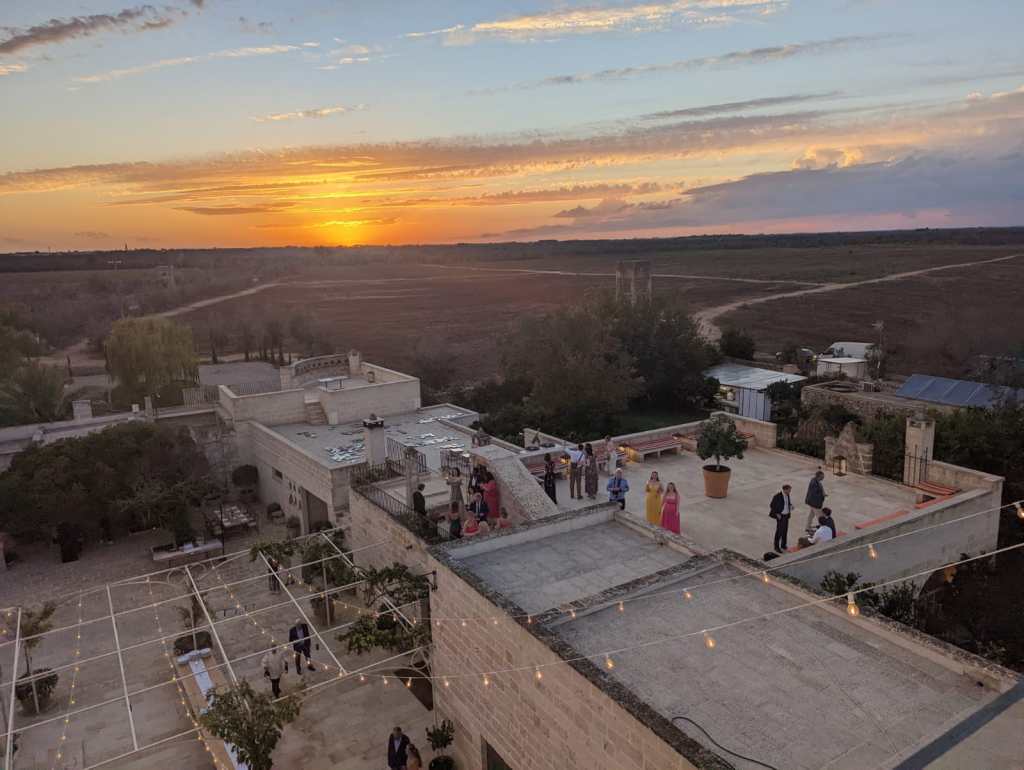
Its purpose was the (much postponed, also to do with Covid) wedding party of a very close and dear relative. The event took place at the incredibly beautiful Masseria Trapanà outside the city, and I won’t go on about it, but we also had the chance to look around Lecce, which has to be one of the most baroque places on earth.
Sitting almost at the point of the Salento peninsula, Lecce may or may not have existed at the time of the Trojan war, under the name of Sybar; the Romans conquered it in their southward expansion in the third century BCE, and renamed it Lupiae. For some reason, under the Emperor Hadrian it was moved two miles to the north-east, closer to the port now known as San Cataldo, and a theatre and an amphitheatre were built. (The latter, at the very centre of the modern city, was – extraordinarily – rediscovered only when Mussolini decided to knock down the centre and build a modern square. When the amphitheatre was revealed, he decided to abandon the redevelopment, since the discovery only went to show how connected the Fascist movement was to ancient Rome (don’t blame me, I’m merely reporting what the guide book says).

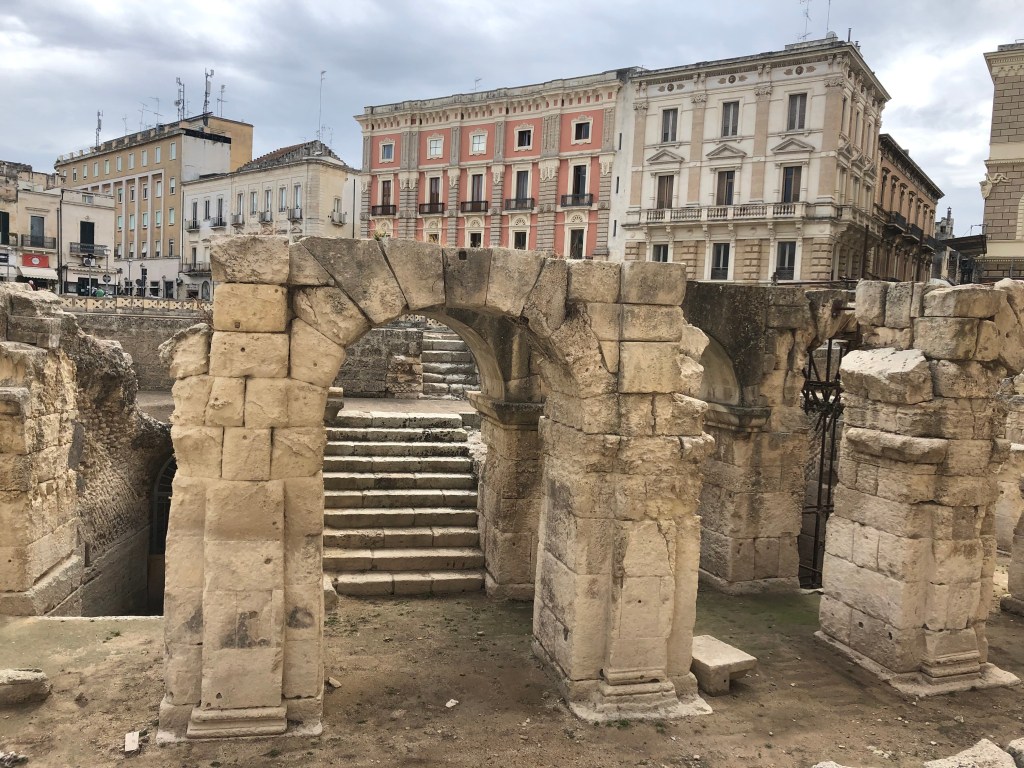
The Roman city was sacked (along with much of Italy) by the Ostrogothic king Totila in the 540s, but was brought back under the control of Byzantium in 549, though it was later occupied by both the Saracens and the Lombards, before coming under the rule of the Norman kings of Sicily, which lasted (with all the usual upheavals and warfare of that unhappy dynasty) until the death in 1194 of Tancredi, the last Norman king, who was born in Lecce and was its count.
In the relative peace of the subsequent Hohenstaufen and Angevine rule, the city prospered. Charles V fortified it massively against the Ottoman threat, and it became, as well as an important trading centre, a haven for refugees from the other side of the Adriatic, having still today a noticeable population of Albanians whose ancestors fled the Turkish advance in the fifteenth century. (I owe this surprising information to an Albanian friend in Cambridge.)


But the most startling thing about Lecce is the number and baroque ornateness of the churches. They are almost all built in a local limestone, which is so bright and seems so friable that I originally thought it was sandstone.
The secular buildings from medieval times to the twentieth century are built of the same material, so there is a wonderful harmony of appearance, with almost nothing high-rise except the towers of the said churches.
SS. Pietro e Paolo stands just above the amphitheatre, with its patrons on either side of the door.

In the same square is a pillar, one of two which formerly marked the end of the Appian Way in nearby Brindisi, gifted to Lecce by the Brindisians after the patron saint of Lecce, St Orontius (Sant’ Oronzo), its first bishop, cured them of the plague. When we were there, the statue of the saint was missing (presumably for cleaning or restoration): this is how it is supposed to look:

We got tickets for entry to some of the churches, and this is where the narrative falls apart a bit, because I failed at the time to note what I was photographing where. So here is a sequence of pictures of certainly and less certainly identified churches: what they all have in common is staggeringly baroque interior decoration. I understand that Lecce is sometimes called the Florence of the South, and though I don’t agree with this, I can see why fans of baroque would say so.

As well as the amphitheatre and the theatre, another visible reminder of ancient Rome is a section of Roman paving in Piazza Dante Alighieri (which also has a plaque with the familiar profile).
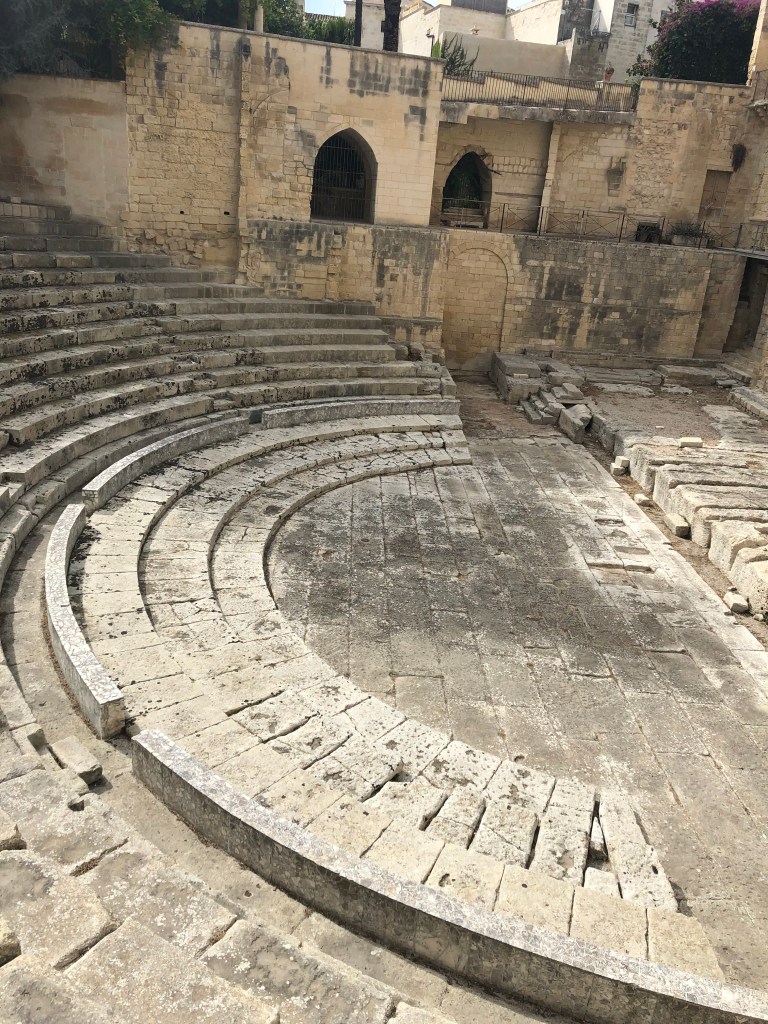
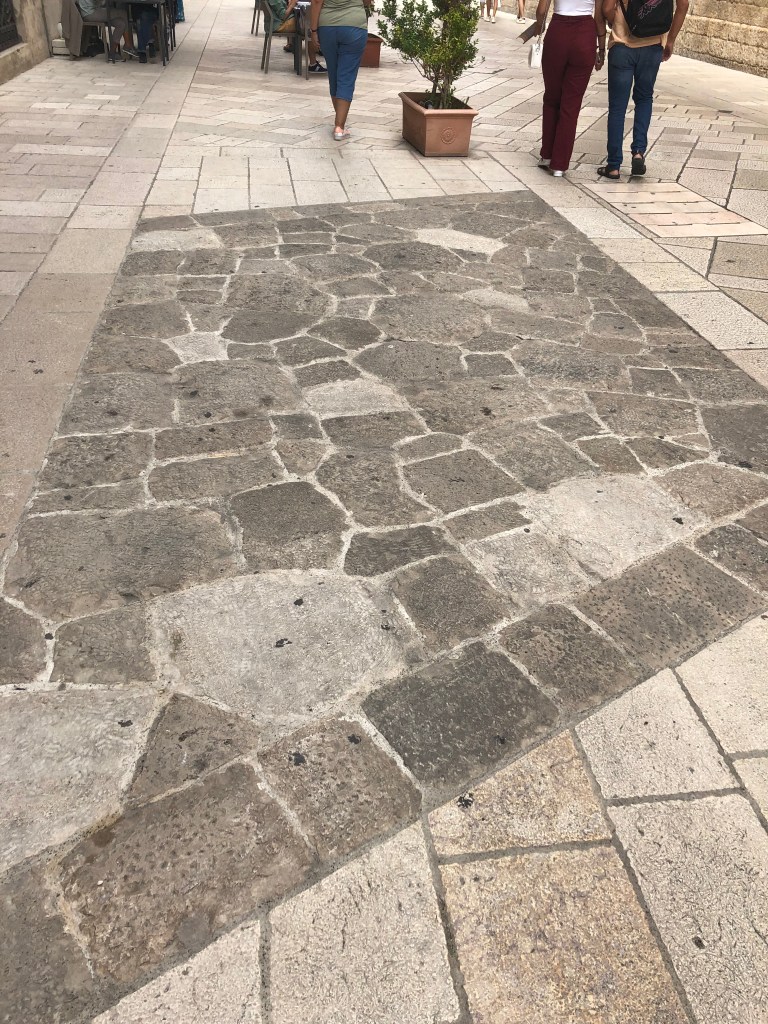
We also visited the Torre del Parco, originally built in 1419 by Giovanni Antonio Orsini del Balzo, Prince of Taranto, who two years earlier had married Anna Colonna, niece (whether real or alleged) of Oddone Colonna, better known as Pope Martin V, who was remarkable even by the standards of the time for his turn-coating during the Western Schism.
Anyway, the Prince built an appropriately vast palace with an equally vast park, which after various twists and turns of history is now a hotel, at which we forgathered for the survivors’ breakfast after the wedding party. I am cursing myself because I failed to take any pictures of the fascinating medieval frescos in what appears to be a tiny chapel inside the tower itself, my only excuse being distraction because of grandmotherly duties … but Lecce (as well as the lovely Masseria) is definitely on the list of places to revisit, the only slight disappointment being that the art inside the churches is (to my taste) rather uninspiring.

Caroline






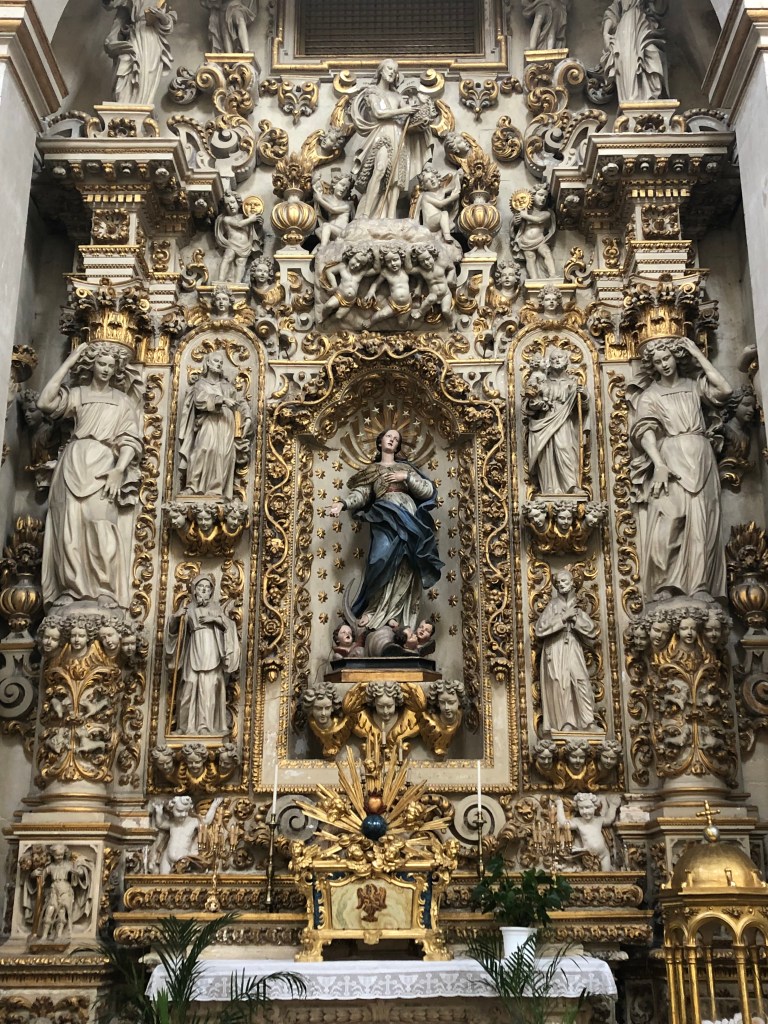
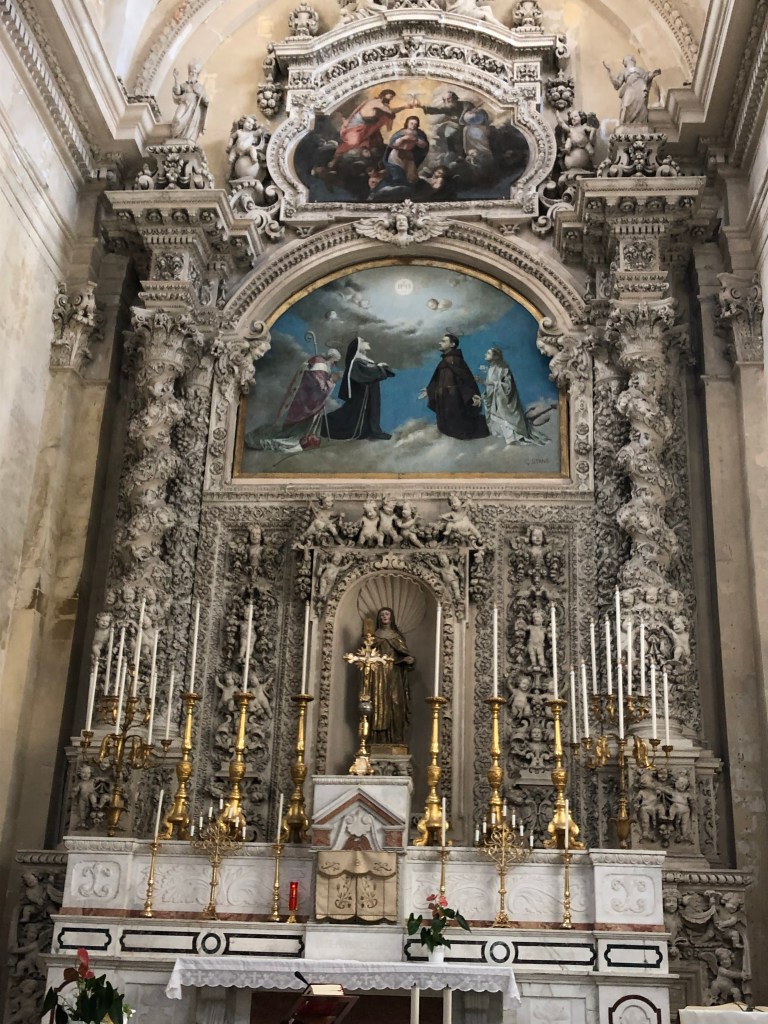
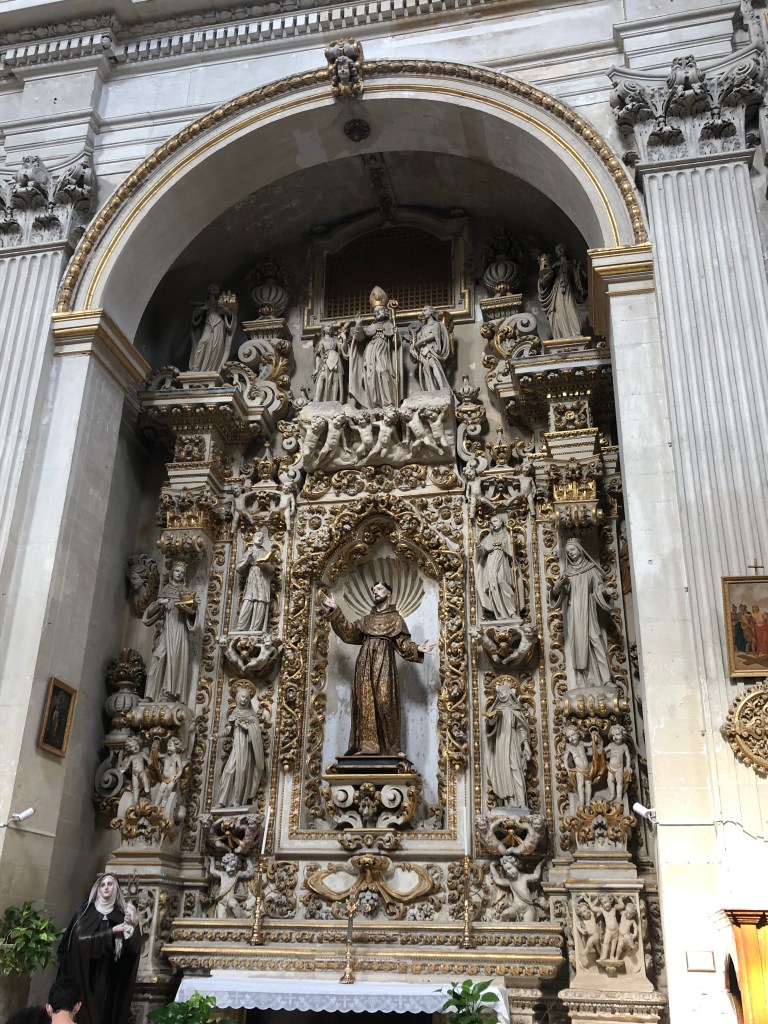
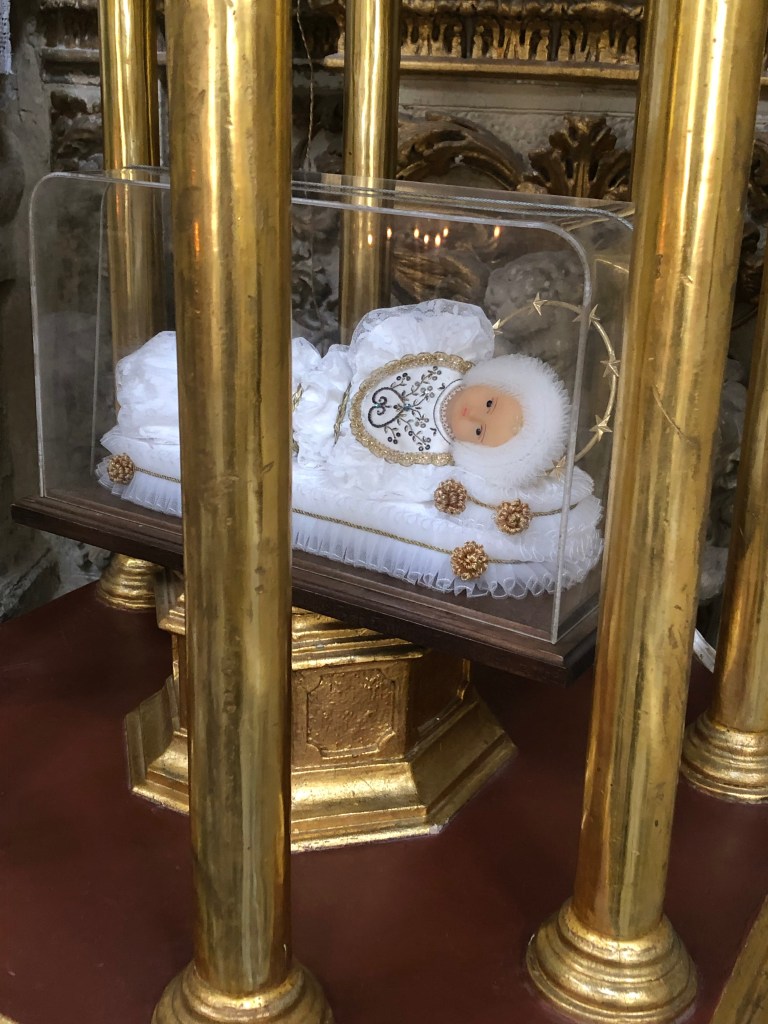

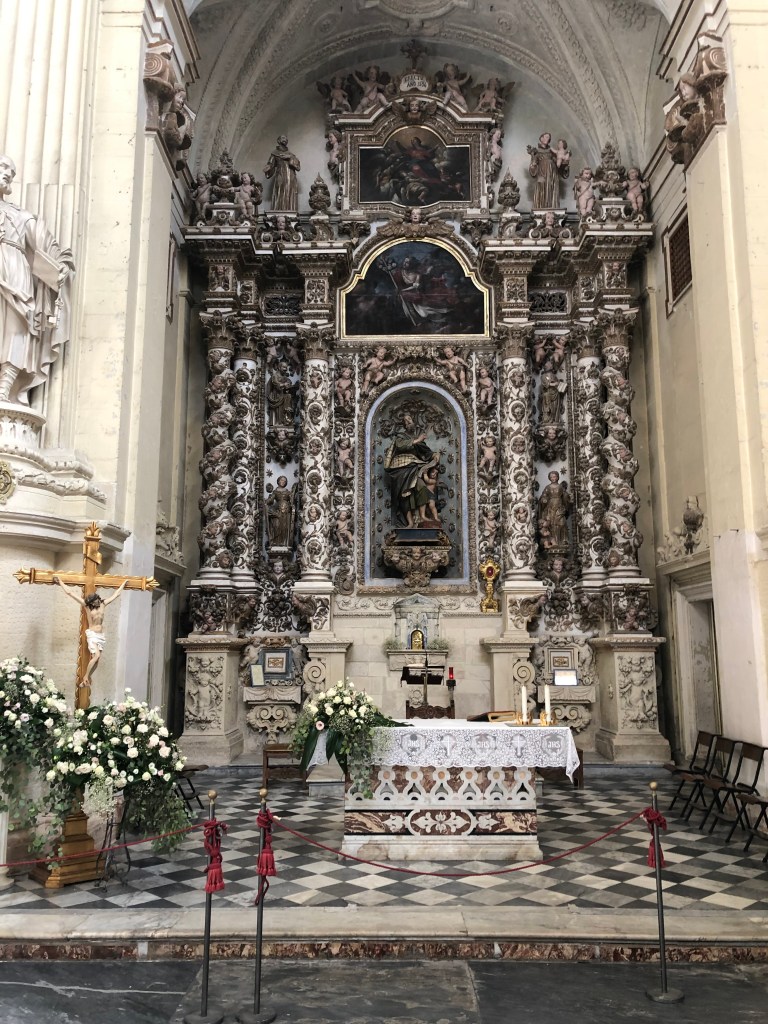


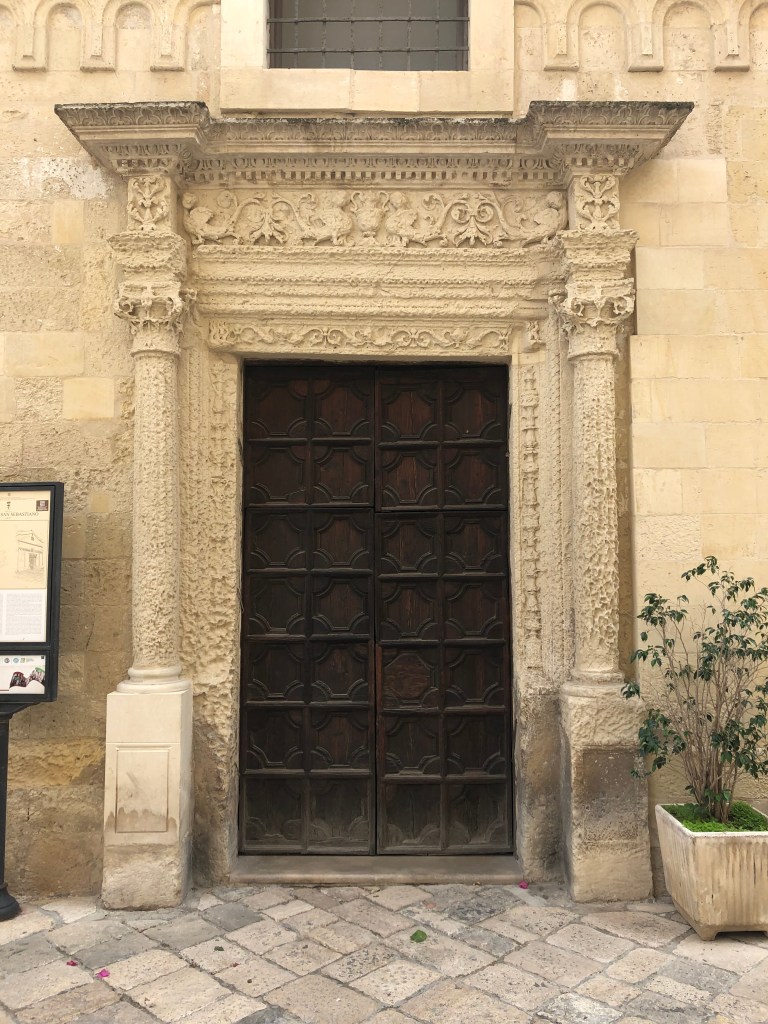
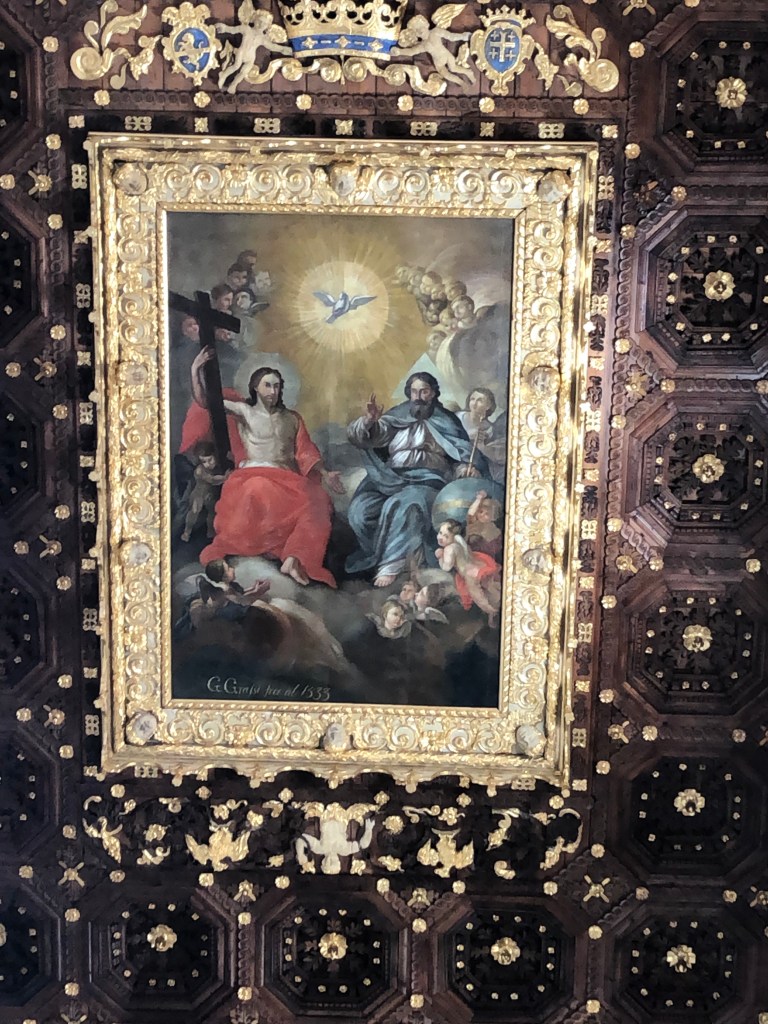

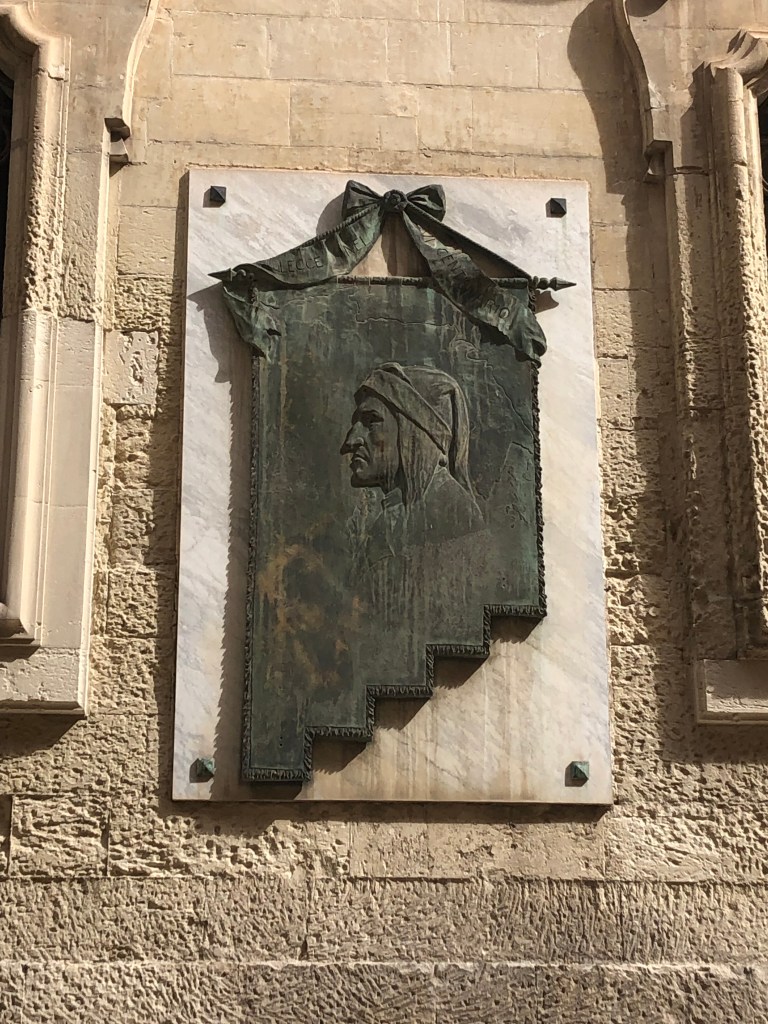



Dear Caroline
Thanks for this blog. So lovely to see all those fascinating images again and to find out some more history of the Lecce and its rulers and occupants. I agree, the art inside the churches was uniformly appalling. So bad that David and I competed to find the worst painting. The travellers are safely home with Walter and the weather has stopped being bright sunshine all day here, and I hope you are getting some sunshine over there
Love Eleanor
>
LikeLiked by 1 person
Thank you for this wonderful post, and I hope that you are feeling better soon.
LikeLiked by 1 person
Thank you for this wonderful post, and I do hope that you are feeling better soon.
LikeLike
Wow — starting 2023 off with a bang. Hopefully time and TLC will lift the brain fog and inspire the writer. Most of us are in need of a jump start of optimisism, I suspect. As you say, there is so much unhappiness all around us. But posts like this lighten the way to better days ahead.
LikeLiked by 1 person
Thanks so much for this kind message!
LikeLike
To your good health and a thank you note from Ossining, New York, USA.
LikeLike
Thank you so much!
LikeLike